#(1815-1902)
Explore tagged Tumblr posts
Text
Holy holy, are you lord 🗣️🙌👏🙏
What do you enjoy doing most in your leisure time? Image courtesy of shutterstock Consecration is not just about being holy; it’s about dedicating ourselves to the service of God. It means placing His will above our own and humbling ourselves before Him. When we pray, we often focus on our wants, but true prayer goes deeper. It’s a declaration of His majesty, a confirmation of His power to…

View On WordPress
#bloganuary#dailyprompt#dailyprompt-1806#dailyprompt-1810#dailyprompt-1813#dailyprompt-1815#dailyprompt-1824#dailyprompt-1828#dailyprompt-1865#dailyprompt-1900#dailyprompt-1902#dailyprompt-1919#dailyprompt-1922#dailyprompt-1927#dailyprompt-1948#dailyprompt-1976#dailyprompt-1985#dailyprompt-2004#dailyprompt-2025#dailyprompt-2028#dailyprompt-2029
0 notes
Text

I realize that many Satanists attach little or no importance to the significance that Eve has for Satanic spirituality. She was the first human being to challenge divine authority. And because of that, she was certainly the first Satanist. I became a Satanist because the Serpent offered the Forbidden Fruit to the woman and not to the man. This fact, for me, makes the Serpent an ally of women against patriarchy and also makes Satanism a non-sexist spirituality. Eve was a symbol of women's empowerment for some of the first Feminists, such as the Suffragette Elizabeth Cady Stanton (1815-1902), who published a version of the Bible translated and commented on by women, in which Eve and the Serpent are interpreted positively: The Woman's Bible.
REMEMBER:
EVE WAS THE FIRST SATANIST.
HAIL EVE !
#ave satanas#666 satan#satanist#hail satan#lilith#satan#satanic#satanism#theistic luciferianism#theistic satanism
24 notes
·
View notes
Text
Monday Musings: The Ring of Fire

Not gonna lie, every time I think about the Pacific Ring of Fire, this song gets stuck in my head (and I love this song so play away).
The Pacific Ring of Fire is a ring of volcanoes around the Pacific Plate Subduction zones.

It is about 25,000 miles long (40,000km) and it contains somewhere between 750-915 active and dormant volcanoes. This is about 2/3 or the world's total volcanoes!

It is also where about 90% of the world's earthquakes occur as well. Speaking of which, if you didn't hear there was an earthquake that happened on December 5th just off the coast of northern California. The recording will be posted on my Patreon so go join and check it out!
Now, this ring of fire is a complex system. I remember being taught as a kid that the Pacific Plate is subducting below like four different plates but that just isn't right. It's actually several plates interacting with each other. Let's zoom in.

We usually only hear about the large plates but there are tons of smaller ones around the globe. For instance, all the ones in this map. The red is the Philippine Plate which is subducting beneath the Eurasian Plate. As you can sea, the Pacific Plate is further out. Not subducting.

The Pacific Plate is subducting under parts of North America, but so is the smaller, older Juan de Fuca and Cocos Plates.

The Nazca Plate is being subducted along the west coast of South America as well as part of the Antarctic Plate. Just for funsies, the map below shows how much has been subducted and what the depth is.

The Ring of Fire has existed for a little over 35 million years. That means subduction of these plates began in the Late Eocene Epoch.


The largest volcanic eruptions in human history occurred in the Ring of Fire. We will start with the 1902 Santa Maria eruption in Guatamala. The volcano is estimated to have started erupting about 103,000 years ago during the Pleistocene Epoch. However, by 102 it was considered dormant. The 1902 eruption had a VEI (Volcanic Explosive Index) of 6 (the highest being a 7) which makes it "colossal".

Mt. Pinatubo activity began about 1.1 million years ago (known as Ancestral Pinatubo). The modern Pinatubo began erupting about 79,000 BC. It's eruption in 1991 is the most famous though. It was the second largest eruption in the 20th century but a lot more devastating. It was also rated a 6 on the VEI and it ejected about 10 cubic km worth of material (10 times larger than the Mt St Helen eruption a decade earlier).

Before and after shot of the river valley near Pinatubo.

Lake Pinatubo now fills the crater left behind by the eruption.
One of the most famous is the 1883 eruption of Krakatoa. It's eruption was so violent that it was heard in Perth Australia nearly 2,000 miles away.

It caused a massive pressure wave that was recorded on barographs around the world (in some cases, the wave was recorded 7 times!). It created devastating tsunamis and killed at least 36,000 people. The eruption lasted from May until October peaking in August when nearly the entire island collapsed into a caldera. Ash fell over approximately 1500 squares miles and the eruption caused a volcanic winter. This one is also categorized as a 6 VEI.

The largest eruption in the Holocene was that of Mt. Tambora in 1815. The volcano had been dormant for centuries caused by gradual cooling of hydrous magma in its closed magma chamber. At depths of abot 5,000-15,000 ft, the exsolution began to form causing an over-pressurization in the chamber (about 58,000-73,000 psi) with temps ranging between 700-850 degrees Celsius (1,290-1,560 degrees F). It is thought that the explosions from the initial eruption could be heard clear over in Thailand over 2,000 miles away.
Pyroclastic flows wiped out the village of Tambora and 13 ft tsunamis hit many Indonesian islands. The explosion had an estimated VEI of 7 with an estimated 10 cubic miles (41 cubic km) of ejecta weighing 10 billion tonnes. The caldera left behind is about3-4.5 miles across and nearly 2300ft (700m) deep. The eruption released the amount of energy equivalent to 33 gigatons of TNT. This was such a large eruption that it caused the Year Without A Summer in the northern hemisphere. The dramatic cooling directly and indirectly killed 90,000 people. Way to go Tambora.

The largest earthquakes on Earth as well including the Sumatra earthquake in 2004 whose 100ft high tsunami killed over 200,000 people in 14 countries the day after Christmas.
There is also the Greta Chilean Earthquake in 1960 estimated at a magnitude 9.4 on the moment magnitude scale. An 82ft tsunami battered the Chilean shores and effected Hawaii, Japan, the Philippines, New Zealand, Australia and the Aleutian Islands.
All in all, the Ring of Fire is a deadly mix in geologic terms and insanely fascinating as it gives a spectacular look into the inner workings of our planet.
Tune in tomorrow for some volcanic trivia! Fossilize you later!
#fun facts#geology#volcanoes#earthquakes#ring of fire#science#science education#subduction#earth is amazing isn't it
45 notes
·
View notes
Photo

Lear Green: Escaping Slavery in a Chest
Lear Green (circa 1839-1860) was an enslaved African American woman in Baltimore, Maryland, who had herself shipped in a chest to Philadelphia, Pennsylvania, to escape slavery. Her story is frequently compared to that of Henry Box Brown (circa 1815-1897), "the man who mailed himself to freedom" in a large box in 1849.
In Green's case, she had the help of her fiancé, a free Black named William Adams, and Adams' mother, also free, who accompanied the chest on its 18-hour trip from Baltimore to Philadelphia circa 1857. Green and the Adams were assisted in her escape by members of the Underground Railroad, a network of safe houses and locations operated by abolitionists running north to Canada, where slavery had been abolished.
After the US Congress passed the Fugitive Slave Act of 1850, runaway slaves could more easily be recaptured by their masters, the master's agents, or professional slave-catchers, and so many continued on through the Underground Railroad network to Canada, where they could not be returned to slavery.
This seems to have been the plan of Lear Green and William Adams, but once she was freed, they settled in Elmira, New York, where they lived for three years until Green's death (cause unknown) in 1860 at the age of 21.
Lear Green & William Still
As with many fugitive slaves who found freedom in the North, Lear Green was helped by William Still (1819-1902), an African American abolitionist and the son of a fugitive slave from Maryland. Still, often referred to as The Father of the Underground Railroad, kept extensive records of all the people he helped find freedom in the North, believing these would someday assist in reuniting families.
In 1872, he published these documents as The Underground Railroad Records, in which he details the escape of Lear Green and how she lived only three years after marrying Adams in Elmira. There is almost no other information on her available. The chest she escaped in is part of a permanent exhibit, Tides of Freedom: African-American Presence on the Delaware River, curated by Professor Tukufu Zuberi, at the Independence Seaport Museum, Philadelphia, Pennsylvania.
Green lived with William Still in Philadelphia until arrangements could be made to send her on to Elmira, New York, where William Adams received her, and they were married. The primary reason for Green attempting the escape was that, as a slave, her children would be born into slavery, and she could not bear that thought. Even so, there is no record of William and Lear Adams of Elmira, New York, ever having children, and, after Lear's death in 1860, nothing is recorded concerning William.
Read More
⇒ Lear Green: Escaping Slavery in a Chest
21 notes
·
View notes
Text
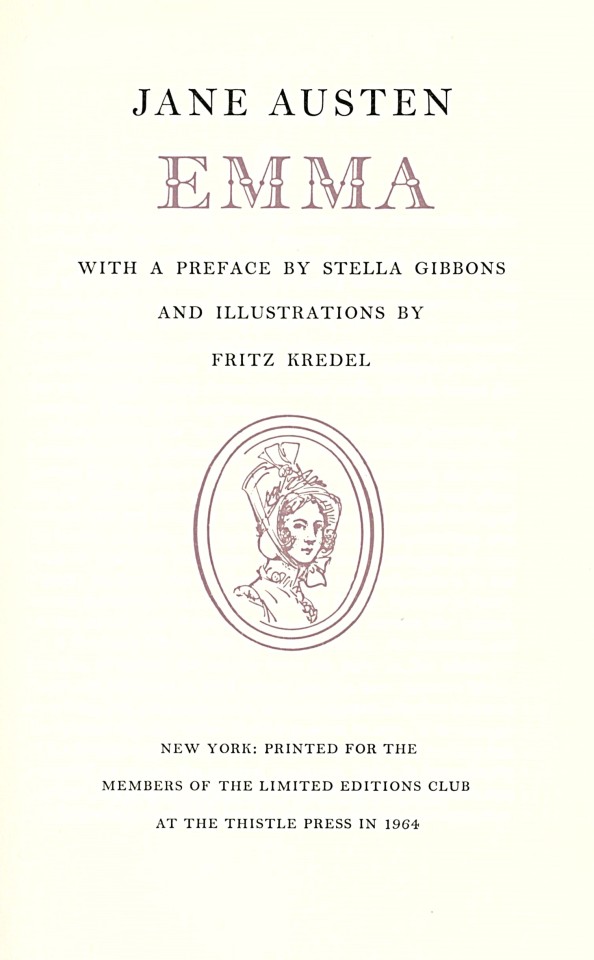

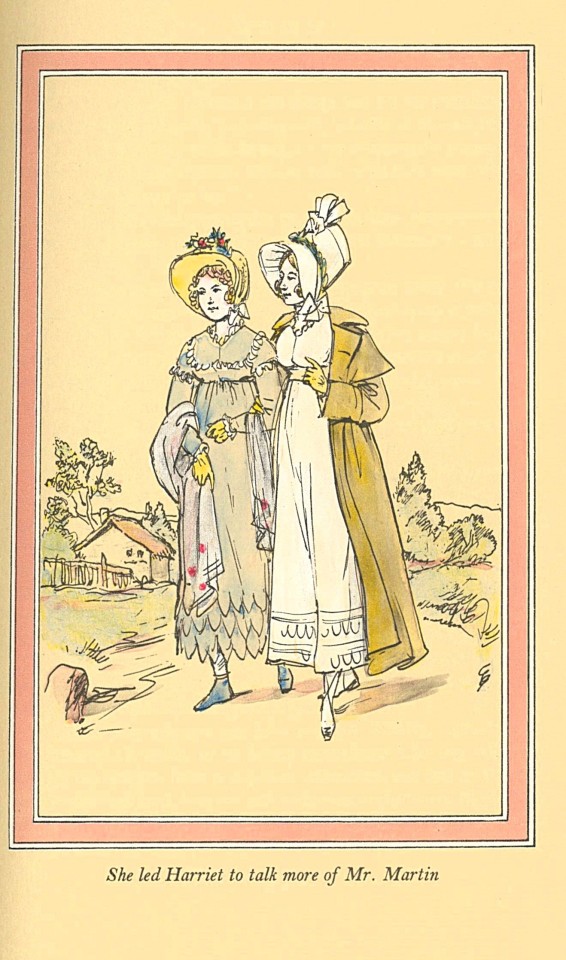
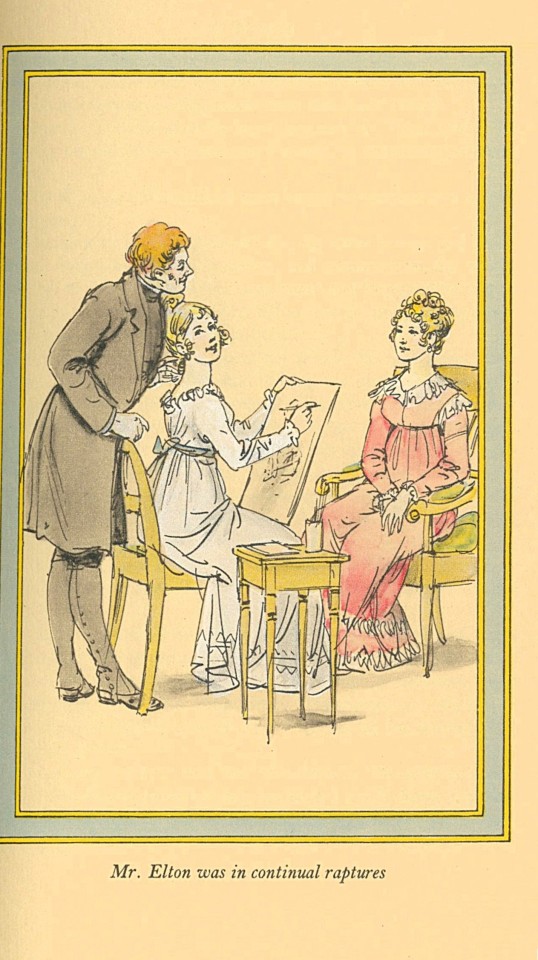
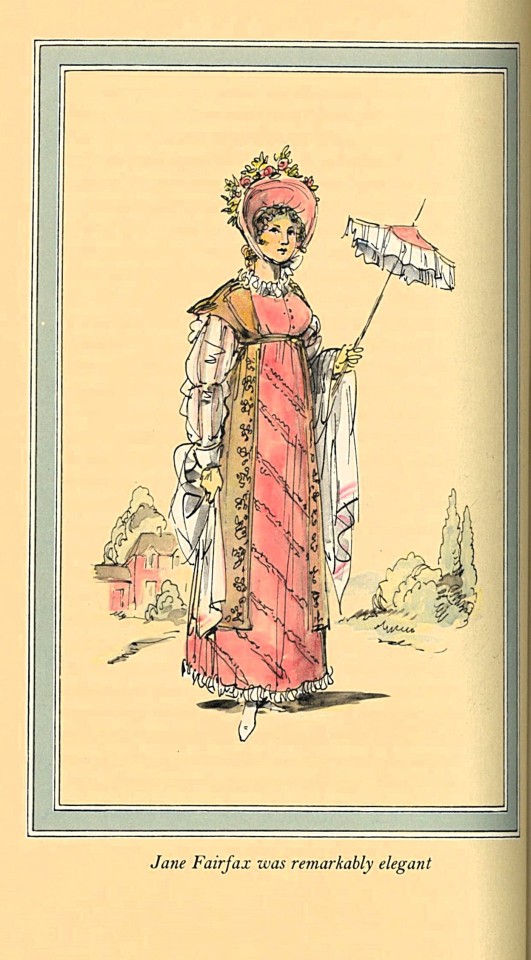
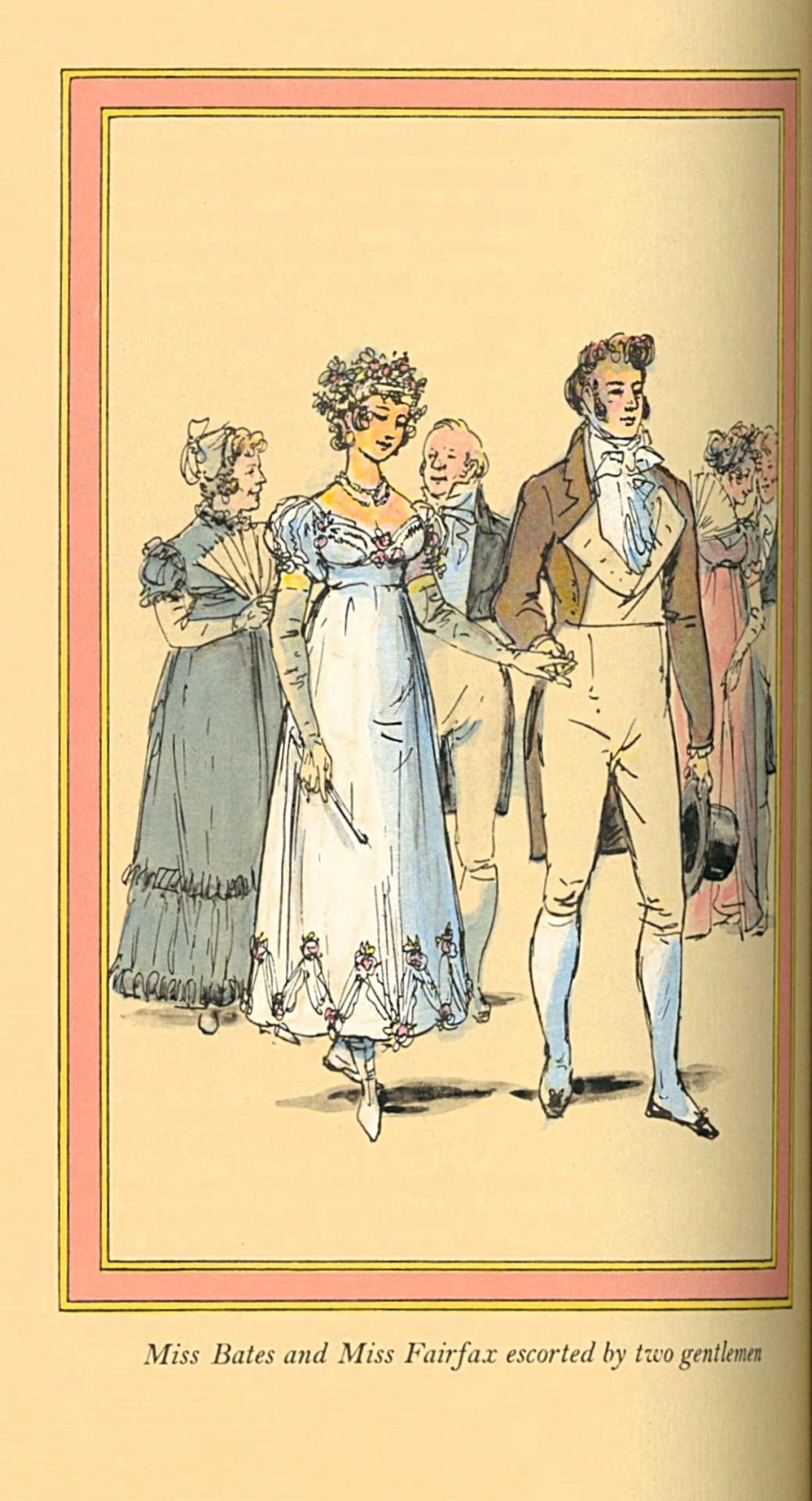
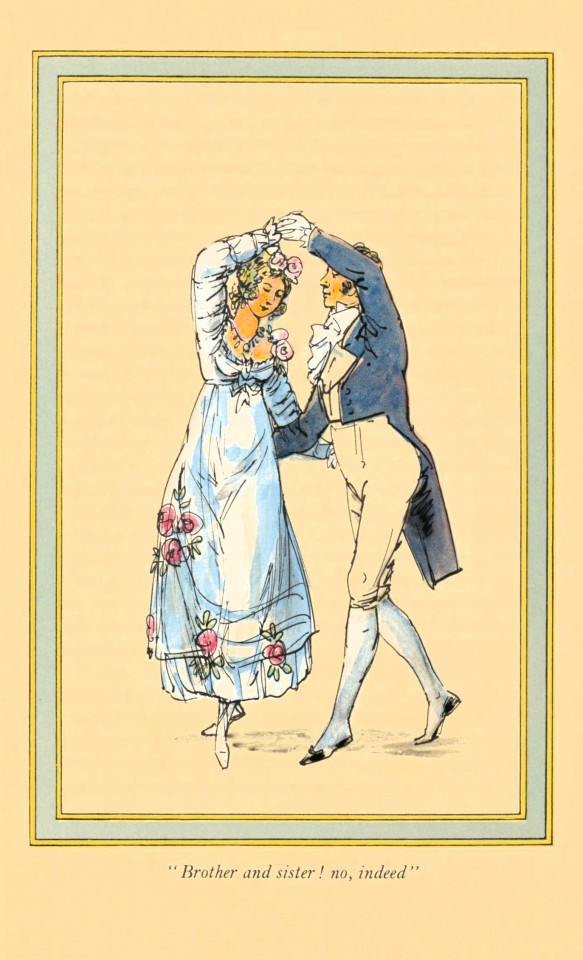
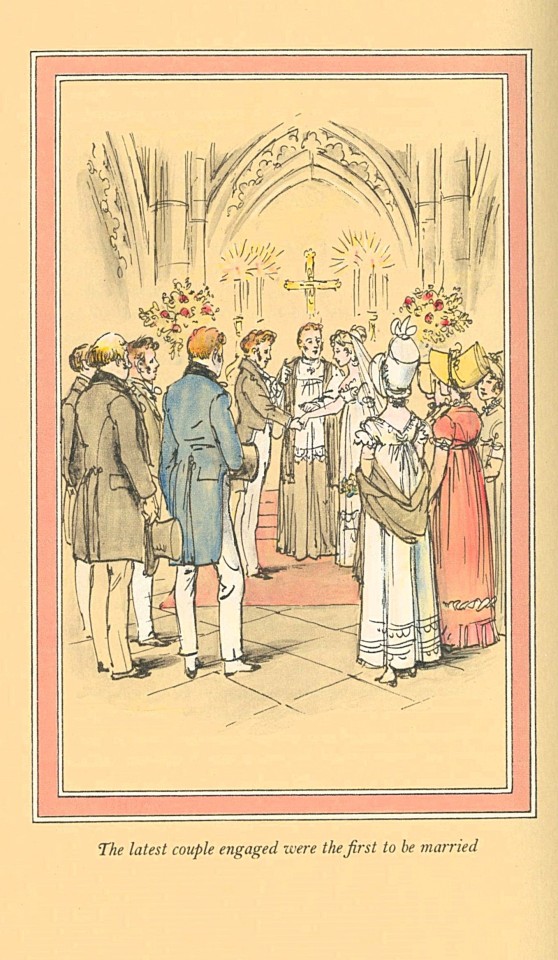
Milestone Monday
Emma’s Entanglements
On this date, December 23 in 1815, John Murray first published Emma by Jane Austen (anonymously) in London, although the title page is dated 1816. Murray offered her 450 pounds for the copyright to the novel, plus the copyrights to Mansfield Park and Sense and Sensibility, which she refused. Instead, she published 2,000 copies of the novel at her own expense and retained the copyright, paying Murray a 10% commission on sales of the edition.
The story revolves around Emma Woodhouse, a young woman who fancies herself a matchmaker and is determined to oversee the romantic lives of those around her, often with humorous and unintended consequences.
The novel explores themes of social class, relationships, and the complexities of human behavior, showcasing Austen's keen observations of character and society. Emma is notable for its use of free indirect speech, a narrative style that allows readers to get inside a character's thoughts while maintaining a third-person perspective.
Often praised for its wit and character development, Emma is considered one of Austen's most accomplished works and has inspired numerous adaptations and reinterpretations in various media.
The images shown here come from Jane Austen’s Emma, with a preface by English author and poet Stella Gibbons (1902-1989) and illustrations in photogravure by the German American artist and designer Fritz Kredel (1900-1973), printed for the Limited Editions Club at the Thistle Press in New York in 1964 and limited to an edition of 1500 signed by the artist.
-View more of our Milestone Monday posts here.
-Melissa, Special Collections Graduate Intern
#Milestone Monday#milestones#jane austen#emma#emma woodhouse#john murray#stella gibbons#fritz kredel#photogravure#thistle press#limited editions club#relationships#matchmaking#love#human behaviour#romance
39 notes
·
View notes
Text

George Dalziel (1815-1902) & Edward Dalziel (1817-1905), 'Doctor Donkey', ''Little Buttercup's Picture Book'', 1881 Source
#George Dalziel#Edward Dalziel#british artists#Little Buttercup's Picture Book#children's books#vintage illustration#vintage art#engravings
23 notes
·
View notes
Text
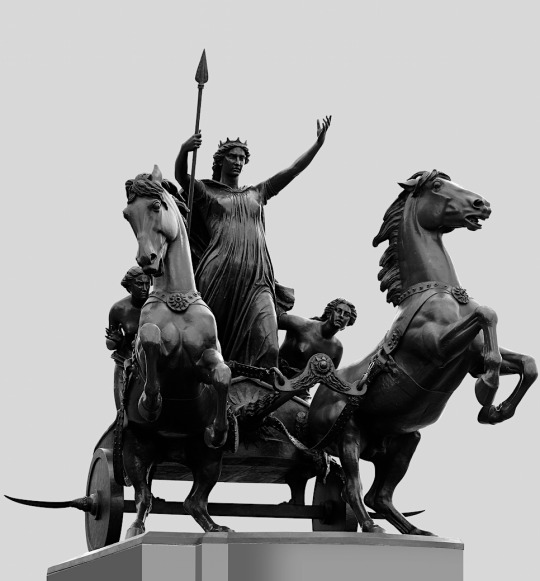
Thomas Thornycroft (UK, 1815 - 1885)
Triumphant Boudica with Doughters on Chariot, 1856-85. Bronze positioned near Westminster Bridge in 1902.
Boudica (also written as Boadicea), Brythonic *boudi 'victory, win' + *-ka 'having' suffix, i.e. 'Victorious Woman', known in Latin chronicles as Boadicea or Boudicea, and in Welsh as Buddug.
After a Roman occupation force flogged her and raped her daughters, Celtic Queen Boudicca, led a revolt against Romans in 60 or 61 A.D., took London and finally defeated in 62 AD. Queen Victoria revived the forgotten legendary name.
eucanthos' img edit
https://en.wikipedia.org/wiki/Boudica
https://www.history.com/news/who-was-boudica
https://www.flickr.com/photos/robertlz/1308260558
https://www.mentalfloss.com/posts/boudica-warrior-queen-iceni-facts
https://assets.editorial.aetnd.com/uploads/2016/05/gettyimages-157905252-2.jpg
23 notes
·
View notes
Text

CONCEPTUAL ANALYSIS
“Peopling the Philippines II” shows how the Austronesian / Malayo-Polynesian migrations developed into the different ethnic cultures of the Philippines. Aside from using photographic reference from the late 1900s to the present, De Pio also uses images from the boxer codex, one of the first ethnographic documentations of the different Philippine people, done in 1590. De Pio also writes the names of the native groups both in roman letters, as well as in the traditional script, called baybayin.
“Pre-Hispanic Philippines” is a black and white imagining of life along the coastal kingdoms such as that of Maynila, Namayan, Tondo, Cebu, Butuan, and Sulu. Whereas many of these kingdoms were converted to Islam, their cultures still were strongly a hybrid of older cultures, as well as Chinese influences, whom these chiefdoms had been trading with as early as 900 AD. Other trade relations were also developed with the Siamese, the Viet, the Javanese Majapahit Empire, and the Bornean Srivijaya Empire, among others.
“Galleon Trade” presents the flourishing trade between Manila and Acapulco, Mexico, between 1565 to 1815. The need to explore Asia, which led to the Spanish colonization of the Philippines, was driven by the Europeans’ demand for spices, specifically in India. Although the Spanish did not find India or similar spices in the Philippine archipelago, the wealth of local gold and access to Chinese products proved justification for colonization. The Spaniards spread through the country via the sword, Catholic evangelization, and diplomacy; the latter is best exemplified with the Blood Compact between the conquistador Miguel de Legaspi and Rajah Sikatuna, of Bohol.
“Breaking Colonial Ties II” relates the latter part of the Philippine Revolution (1896-1898), where General Emilio Aguinaldo (1869-1964) took over the revolutionary government, now called the Republic of Biak-na-Bato. Finally there is Aguinaldo’s declaration of Philippine Independence, in June 1898, where he formally unfurled the Philippine Flag in Kawit, Cavite, which was made by Marcela Mariño Agoncillo, aided by her daughter Lorenza and Delfina Herbosa Natividad.
“Re-asserting Independence” presents the battles between the Filipino forces against the Americans, who had snatched victory from the Philippine revolutionaries in 1898. After a brief respite, the Filipinos, under President Emilio Aguinaldo, fought bravely but unsuccessfully during the Philippine-American War of 1899 to 1902. Two of the leading the Filipino commanders of that time were General Antonio Luna de San Pedro y Novicio Ancheta (1866-1899) and General Gregorio Hilario del Pilar y Sempio (1875-1899).
IN CONCLUSION
The exploration of the Philippines' rich history reveals a complex tapestry of cultural evolution, trade, and resistance. From the early Austronesian migrations that laid the foundation for diverse ethnic cultures to the flourishing maritime trade routes established during the Galleon Trade, the Philippines has always been a convergence point of various influences. The interactions with neighboring regions, including China and Southeast Asia, significantly shaped the local cultures, as evidenced by the hybrid identities formed in pre-Hispanic kingdoms. Furthermore, the documentation of these early peoples through works like the Boxer Codex highlights the importance of preserving cultural heritage and acknowledging the roots of Filipino identity. The struggle for independence, as illustrated in the latter part of the Philippine Revolution and the subsequent conflicts with American forces, underscores the resilience and determination of the Filipino people. Figures such as General Emilio Aguinaldo and his commanders exemplify the spirit of resistance against colonial powers, marking a significant chapter in the quest for self-determination. The declaration of Philippine Independence in 1898, coupled with the ongoing fight during the Philippine-American War, illustrates the challenges faced by a nation striving to assert its sovereignty. Ultimately, this historical journey reflects not only the complexities of colonial legacies but also the enduring strength of Filipino identity and the continuous struggle for autonomy and recognition in the face of external pressures.
written by: Manaloto, Stephanie Shane Y. & Galang, Koleen M.
2 notes
·
View notes
Text
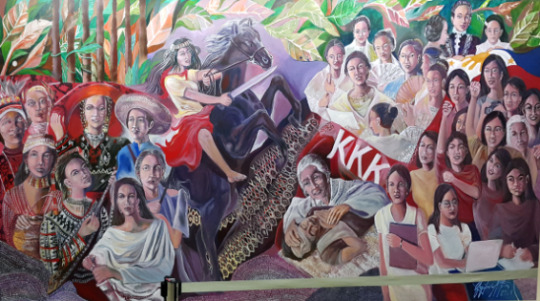
CONCEPTUAL ANALYSIS
“Peopling the Philippines II” shows how the Austronesian / Malayo-Polynesian migrations developed into the different ethnic cultures of the Philippines. Aside from using photographic reference from the late 1900s to the present, De Pio also uses images from the boxer codex, one of the first ethnographic documentations of the different Philippine people, done in 1590. De Pio also writes the names of the native groups both in roman letters, as well as in the traditional script, called baybayin.
“Pre-Hispanic Philippines” is a black and white imagining of life along the coastal kingdoms such as that of Maynila, Namayan, Tondo, Cebu, Butuan, and Sulu. Whereas many of these kingdoms were converted to Islam, their cultures still were strongly a hybrid of older cultures, as well as Chinese influences, whom these chiefdoms had been trading with as early as 900 AD. Other trade relations were also developed with the Siamese, the Viet, the Javanese Majapahit Empire, and the Bornean Srivijaya Empire, among others.
“Galleon Trade” presents the flourishing trade between Manila and Acapulco, Mexico, between 1565 to 1815. The need to explore Asia, which led to the Spanish colonization of the Philippines, was driven by the Europeans’ demand for spices, specifically in India. Although the Spanish did not find India or similar spices in the Philippine archipelago, the wealth of local gold and access to Chinese products proved justification for colonization. The Spaniards spread through the country via the sword, Catholic evangelization, and diplomacy; the latter is best exemplified with the Blood Compact between the conquistador Miguel de Legaspi and Rajah Sikatuna, of Bohol.
“Breaking Colonial Ties II” relates the latter part of the Philippine Revolution (1896-1898), where General Emilio Aguinaldo (1869-1964) took over the revolutionary government, now called the Republic of Biak-na-Bato. Finally there is Aguinaldo’s declaration of Philippine Independence, in June 1898, where he formally unfurled the Philippine Flag in Kawit, Cavite, which was made by Marcela Mariño Agoncillo, aided by her daughter Lorenza and Delfina Herbosa Natividad.
“Re-asserting Independence” presents the battles between the Filipino forces against the Americans, who had snatched victory from the Philippine revolutionaries in 1898. After a brief respite, the Filipinos, under President Emilio Aguinaldo, fought bravely but unsuccessfully during the Philippine-American War of 1899 to 1902. Two of the leading the Filipino commanders of that time were General Antonio Luna de San Pedro y Novicio Ancheta (1866-1899) and General Gregorio Hilario del Pilar y Sempio (1875-1899).
IN CONCLUSION
The exploration of the Philippines' rich history reveals a complex tapestry of cultural evolution, trade, and resistance. From the early Austronesian migrations that laid the foundation for diverse ethnic cultures to the flourishing maritime trade routes established during the Galleon Trade, the Philippines has always been a convergence point of various influences. The interactions with neighboring regions, including China and Southeast Asia, significantly shaped the local cultures, as evidenced by the hybrid identities formed in pre-Hispanic kingdoms. Furthermore, the documentation of these early peoples through works like the Boxer Codex highlights the importance of preserving cultural heritage and acknowledging the roots of Filipino identity. The struggle for independence, as illustrated in the latter part of the Philippine Revolution and the subsequent conflicts with American forces, underscores the resilience and determination of the Filipino people. Figures such as General Emilio Aguinaldo and his commanders exemplify the spirit of resistance against colonial powers, marking a significant chapter in the quest for self-determination. The declaration of Philippine Independence in 1898, coupled with the ongoing fight during the Philippine-American War, illustrates the challenges faced by a nation striving to assert its sovereignty. Ultimately, this historical journey reflects not only the complexities of colonial legacies but also the enduring strength of Filipino identity and the continuous struggle for autonomy and recognition in the face of external pressures.
written by: Manaloto, Stephanie Shane Y. & Galang, Koleen M.
2 notes
·
View notes
Text
Marshal Ney in Galicia
In 1902, an author named comte de la Bédoyère (I do not know if and how related to the la Bédoyère executed in 1815) wrote a book about Marshal Michel Ney, mostly about his trial and execution. But the appendix also contains several other documents, among them excerpts from the memoirs of a certain general Béchet, Ney's aide-de-camp. The part I translated is about the first months of 1809, Ney's time in Galicia, after Napoleon in January 1809 had quit Spain for France and had left the task of conquering Portugal to his subordinates.
Marshal Soult was put in charge of this operation, in which he was to be assisted by Marshal Ney. The Marshal had sent me to Marshal Soult to discuss with him the positions which the troops of our corps would occupy as his troops moved towards Portugal. I found him near the place of Ferrol, which had not yet been surrendered (it was surrendered the next day). He didn't receive me too well, not because he resented me or even knew me, but because he wasn't on very good terms with my patron. I thought I would starve to death in that unfortunate town of Ferrol, where I had great difficulty in getting a bite to eat, as Marshal Soult had not invited me to dine with his officers.
Bad Soult! Don't kill the messenger (or in this case, don't let him starve) just because it's a messenger from Ney...
I'm unsure what the two marshals had agreed upon with regards to the placement of Ney's troops, who, as Béchet says himself, had the task to support and thus to stay in contact with Soult's corps in Portugal. However, given the two marshals were "not on very good terms" with each other, Ney probably followed a primal instinct and tried to get as much distance between himself and Soult as possible, in going north to La Coruna, while Soult went south into Portugal. Communications soon were interrupted not only with Soult's expedition corps but also with Madrid. But it seems Ney & C. did not mind too much:
Our stay in this town was not without its pleasures. Sometimes we played whist at the marshal's house at one napoleon a card. One evening I lost twenty cards, I didn't have such a large sum with me and I asked the Marshal to give me credit; he sometimes demanded them back from me in jest, I replied in the same tone, and I ended up not paying him. The Marshal, who had only rare relations with King Joseph because the roads were interrupted by the guerillas, was regarded by the Spaniards as the viceroy of the province and had all the powers.
To which I have two remarks: 1) Some people were accused of wanting to make themselves king whenever they found themselves in a similar position. Just saying. And 2) Ney and his aides were not alone in regarding the interruption of communication by guerillas as a given, and to pay little attention to it. Joseph and Jourdan in Madrid, too, waited for an explicit order from an exasperated Napoleon before sending Kellermann to reopen communications with Ney in Galicia (with Soult in Portugal there was no contact at all).
And now comes a rather ... interesting story about what "viceroy" Ney was up to in this new domain of his:
He had the idea of visiting all the women's convents, and there were many, and of telling the nuns and novices that all those who had entered them against their will could leave if they wished. It was playing the role of the tempter, but such was the spirit of the time, and we thought we were doing a meritorious work by acting in this way.
I'm sure you did, you little prick...
In a convent where the nuns had the reputation of being very fanatical, a young novice, with a charming face, threw herself crying at the feet of the Marshal and addressed him in Spanish in a speech that we still only barely understood. Our hearts went out to her, and already more than one gallant knight was offering her his services, ...
Uh-huh...
... but our interpreter told us that, on the contrary, she announced to the Marshal that the Virgin had appeared to her that night, and warned her that that very day she would obtain the dispensation of age necessary to make her vows, and that she had no doubt that the Marshal was the envoy from heaven who had come to grant her the grace she was seeking. The Marshal replied that it did not depend on him, but that he would write to the court. So much for our tender feelings. In fact, I seem to recall that only one of these ladies took advantage of the freedom offered to her; she left the convent to marry an officer who took her back to France with him.
Must have been quite a blow to the self-esteem of all those "gallant knights" trying to free poor enslaved women, for utterly unselfish reasons, of course.
#napoleon's marshals#michel ney#peninsular war#jean de dieu soult#those two again#Coruna 1809#Galicia 1809#chercher la femme I guess?
28 notes
·
View notes
Text

Footnotes, part 12 (final)
[990] Steuart, James, “An Inquiry into the Principles of Political Economy,” London: Printed for A. Millar, and T. Cadell, in the Strand., 1767, book 1, chapter 8.
[991] Steuart, James, “An Inquiry into the Principles of Political Economy,” London: Printed for A. Millar, and T. Cadell, in the Strand., 1767, book 1, chapter 20.
[992] Simonde de Sismondi, J. C. L., “Political Economy,” 1815, chapter 3.
[993] Simonde de Sismondi, J. C. L., “Political Economy,” 1815, chapter 6.
[994] Senior, Nassau William, “Three Lectures on the Rate of Wages,” of Magdalen College, A.M.; delivered before the University of Oxford in Easter Term 1830, Late Professor of Political Economy, The Second Edition, London; John Murray, Albemarle Street, MDCCXXXI, LONDON: Printed by William Clowks, Stamford Street, lecture 1.
[995] Lloyd, Henry Demarest, “Lords of Industry,” 1910.
[996] Robinson, Margaret Blake, Editor of the Herald Light, “Among the Coal-Miners,” Missionary Review 1902, Vol. 25, pp. 835–39.
[997] Van Kleeck, Mary, “Working Hours of Women in Factories,” Charities and Commons 17 (1906–07), 13–21.
[998] “The Enslavement of American Labor,” by George S. Boutwell. Address Delivered in Faneuil Hall, January 22, 1902, Under the Auspices of the Boston Central Labor Union, (Boston: New England Anti-Imperialist League, 1902).
[999] “Lords of Industry,” by Henry Demarest Lloyd, 1910, chapter 10.
[1000] “Letter From a Birmingham Jail,” written while in jail by Martin Luther King Jr, 1963. Quoted from The Portable Sixties Reader, edited by Ann Charters, a Penguin Classics, page 28.
[1001] “Ideology of the Cuban Revolution,” by Ernesto Che Guevara.
[1002] “Communism and Anarchy,” by Peter Kropotkin, Freedom: July (p30)/August (p38) 1901.
[1003] “Agrarian Justice,” by Thomas Paine.
[1004] “Eight Hours Must Come,” by Robert Green Ingersoll, 1877.
[1005] “A New View of Society,” by Robert Owen, Essay 3, 1816.
[1006] “Manifesto of the Communist Party,” by Karl Marx and Friedrich Engels, “Position of the Communists in Relation to the Various Existing Opposition Parties,” 1848.
#class consciousness#capitalism#class#class struggle#communism#civilization#money#classism#anti capitalism#anti classism#consumption#economics#industrial society#poverty#workers#labor#anarchism#anarchy#anarchist society#practical anarchy#practical anarchism#resistance#autonomy#revolution#anti capitalist#late stage capitalism#daily posts#libraries#leftism#social issues
4 notes
·
View notes
Text
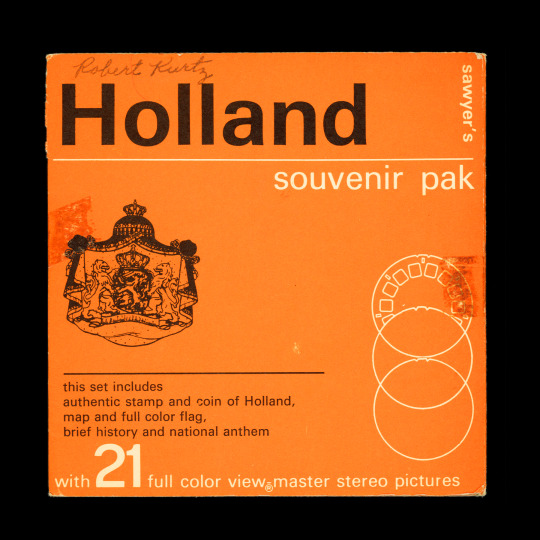
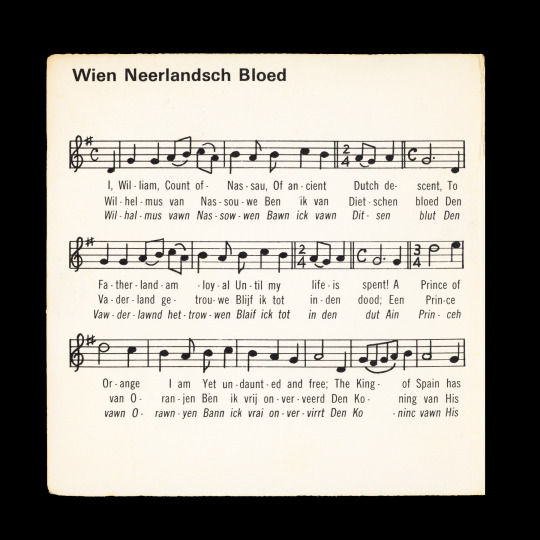
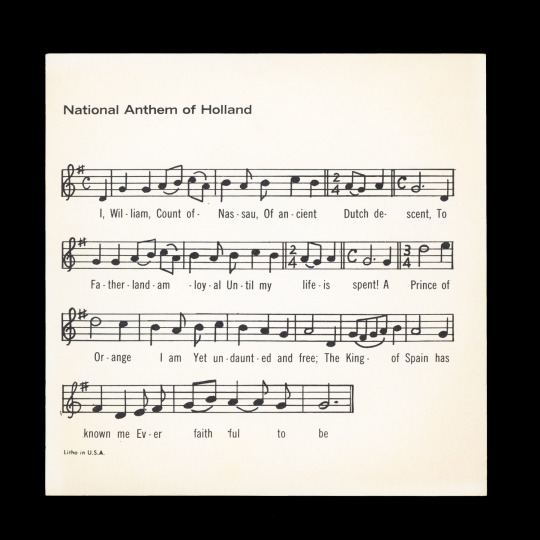


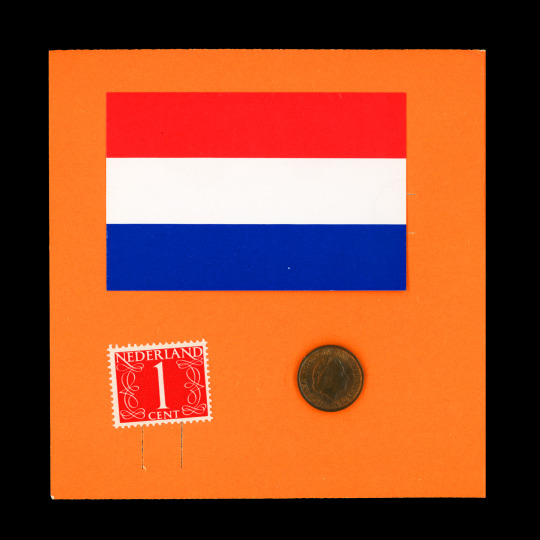










Brand: View-Master Company: Sawyer's Inc. Packet Title: Holland Packet Subtitle: N/A Packet Type: souvenir pak Packet Number: B 190 Packet Style: S5 Booklet: Included Reel Numbers: B 1901, B 1902, B 1903 Reel Edition: N/A Date: Undated Copyright: Sawyer's Inc.
souvenir pak Descriptions: Wien Neerlandsch Bloed - National Anthem of Holland
the story of Holland The 57½ million square miles of the earth would seem to most people a generous enough gift of nature and they would be content to leave it at that--but not the Dutch. With some ten million people crowded into an area no larger than tiny Massachusetts and Connecticut combined, they have boldly taken over where nature left off. With the aid of dikes and barriers of sand dunes they have added several million more acres of land to their country. More than half of the nation's population lives below sea level.
The earliest history of these people begins in about 55 B.C. when Julius Caesar, during his campaigns, found this area populated with Celtic and Germanic tribes such as the Belgai, Batavi, Frisians and Saxons. In 15 B.C. under Augustus, the territory was brought under Roman rule. During the third century a powerful Frankish tribe conquered many of the earlier tribes and the Frankish language (the official Dutch language now spoken in Holland) was generally adopted. The Franks accepted Christianity, but it remained for Charlemagne (742-814) to subdue the Frisians and Saxons and force them to accept this new religion.
Under feudal rule cities arose and petty disputes among the rulers enabled these cities to establish some measure of home rule. In the 15th century under Burgundian rule The Netherlands (which until 1830 included Belgium and Luxemburg) gained "The Great Privilege," a charter which greatly curtailed the sovereign's power in local matters. Then by marriage the country came under Spanish rule. The people rebelled and the long war which the Dutch waged against Spain (1468-1648) finally brought financial ruin to the Spaniards. Having freed themselves of Spanish restrictions, the Dutch grew rich with trade during the 17th century and acquired colonial holdings. But a century of decay followed and Holland lost much of its trade and some of its colonies.
In 1795 the country was conquered by the French. In 1815, following Napoleon's downfall, The Kingdom of the Netherlands was formed at the Congress of Vienna. The southern provinces, dissatisfied with this union, revolted, and to avoid a general conflict the great powers allowed them to form the separate Kingdom of Belgium. Luxemburg was lost when Queen Wilhelmina came to the throne in 1890 because its law did not then permit female rule.
During World War I the country remained neutral, but in World War II the Germans invaded Holland. Queen Wilhelmina fled to England to carry on the government-in-exile. Dutch resistance lasted only five days, but the German wholesale, systematic destruction of the country left Holland in ruin. The recovery of this country from the war has been remarkable. The government of Holland, now with Queen Juliana as its sovereign, is a constitutional monarchy. Amsterdam is the constitutional capital, but the actual seat of government is in The Hague. The kingdom includes the Netherlands Antilles, Surinam and the western half of New Guinea. Rotterdam, located at the mouths of the two great rivers, the Rhine and the Meuse, is the biggest port in the world next to New York. Amsterdam, the largest city in Holland, rivals Antwerp as diamond-cutting center of the world. A network of 50 canals carves the country into hundreds of tiny islands which are connected by 400 bridges. Bicycles are the major form of transportation and outnumber cars about six to one. This low, flat land has a maritime climate—cool and damp—and strong winds blow steadily from the North Sea. Holland's natural resources are limited and the country imports many raw materials which are processed into finished products for export. Because of its geographical position and excellent harbor, Holland has developed into a great trading, transporting, and brokerage nation.
To foreigners Holland is symbolized by tulips, windmills, picturesque costumes and the quaint story of a boy with his finger in the dike. Tulips they have (and hyacinths) in countless numbers and the sale of bulbs is a serious and thriving business. The windmills are gradually being replaced by steam or electrically driven pumps. There are towns where local costumes are worn, but for the most part the Dutch are as up to date in their dress and ideas as any country on earth. As for the fanciful, fictional tale of the boy who held his finger in the dike all one night and saved his people from the sea, the Dutch--out of politeness to tourists—have erected a statue in his honor. But, as one official puts it, "Polite we are but quaint we ain't."
Population: 11,389,000 Basic Language: Dutch Capital City: The Hague Form of Government: Kingdom Best Known Industry: Raising flower bulbs, manufacture of textiles, clothing, shipbuilding and shoes Comparative Size: Approximately the size of the State of Maryland (13,025 sq. mi.)
#sawyer's inc.#viewmaster#view-master#holland#international packets#travel packets#b 190#b 1901#b 1902#b 1903#S5 packet#souvenir pak
2 notes
·
View notes
Text




Le 19e siècle en médecine. C’est le début de la médecine moderne, celle qui aujourd’hui encore se développe et devient de plus en plus poussée et sophistiquée. Elle contient encore de nombreux éléments d’art dits “Ars Medica”, notamment dans le domaine de la chirurgie, mais peu à peu grâce à l’acquisition ininterrompue de connaissances et de techniques, laissera sa place à une manière plus scientifique de la pratiquer. Avec ce début d’émergence plus indépendante de “l’habileté” ou de l’expérience de ceux qui l’exerce, c’est dans ce siècle et cette façon de voir que naîtra la théorie de l’évolution. C’est notamment cette à cette époque qu’ont été développés de véritables remèdes et médicaments contre certaines maladies infectieuses endémique, mais avec le déclin de la plupart des maladies mortelles qui est davantage lié à l’amélioration de la santé publique et de la nutrition, la médecine continuera à utiliser les cautères, scarifications et autres sétons. Dans ce siècle, de nombreuses inventions auront lieu. René Laennec invente le stéthoscope en 1815 tout en permettant une vulgarisation de la méthode de l’auscultation. Il étudiera aussi les cirrhoses du foie dues à l’alcool. L’anesthésie inventée en 1846 par William Morton, dentiste de l’hôpital de Boston se développera avec l'éther, le Chloroforme et d'autres produits. Adolf Kussmaul créera en 1862 en gastroscopie en s’inspirant des exploits des avaleurs de sabres. En 1896, ça sera grâce à Scipione Riva-Rocci que la première mesure de la pression artérielle au tensiomètre sera faite tandis qu’au tout début du 20e siècle, à cheval avec le 19e siècle, Willem Einthoven mettra au point l’électrocardiographie. C’est durant cette période que naîtra une véritable évolution de la médecine, notamment avec la supplantation des concepts d'épidémiologie des maladies infectieuses par l’apparition de la bactériologie et de la virologie. C’est aussi la période ou la microbiologie avec comme père Louis Pasteur apparaîtra, avec notamment la Théorie des Germes sur la putréfaction, qui permet ainsi de faire un lien entre les maladies et les micro-organismes tout en mettant au point la pasteurisation (encore utilisée de nos jours) et le vaccin de la rage. Dès 1862, la chirurgie propre sera systématisée par Eugène Koeberlé qui sera un des premiers à le faire. Ceci par une pratique rigoureuse de l’hémostase pour laquelle il met au point toute une panoplie d’instruments et par l’innovation dans les pré- opératoires et post-opératoires qui fait donc encore plus progresser la chirurgie.
C’est ainsi que nous avons de très grands nombres de médecins et d’innovations dans la médecine au cours du 19e siècle. Adolf Kussmaul (1822-1902) avec ses solides contributions avec le prélèvement du suc gastrique, la pompe d’estomac pour traiter la sténose ou bien les essais en gastroscopie. Gaspard Vieusseux (1746-1814) qui est attaché à la neurologie avec la première description de la méningite cérébro-spinale (ou première description clinique du Syndrome de Wallenberg) ou bien encore Rudolf Virchow (1821-1902) qui est vu comme la figure médicale d’excellence à son époque grâce à ses travaux, notamment sur l’hygiène et la prévention des maladies, l’anatomie pathologique, mais aussi la médecine sociétale avec la création des premiers hôpitaux communaux en Allemagne qui visait à améliorer la vie du “prolétariat”. Il se fit aussi promoteur d’une médecine qui fut strictement orientée vers les sciences naturelles.
0 notes
Photo

Passmore Williamson: Liberator and Celebrity Prisoner
Passmore Williamson (1822-1895) was a Quaker abolitionist, successful businessman, and member of the Underground Railroad in Philadelphia, Pennsylvania. Williamson helped many slaves gain freedom, among them Henry Box Brown (circa 1815 to 1897), but is best known for the liberation of Jane Johnson (circa 1814/1827 to 1872) in July 1855 and his subsequent imprisonment, which made him a national celebrity.
Williamson and William Still (1819-1902), both active members of the Pennsylvania Anti-Slavery Society and the Underground Railroad, rescued Johnson from her master, John Hill Wheeler, at the docks of Philadelphia, and Still carried her and her two sons off, hiding them in a safe house. Wheeler had Judge John K. Kane issue a writ of habeas corpus to Williamson for Johnson and the boys to appear in court. Williamson could not comply because he had no idea where Still had taken them. He was charged with contempt of court and sentenced to 100 days in Moyamensing Prison.
Jane Johnson's liberation, the subsequent trial of William Still and five dockworkers who had helped in her escape, and, especially, Williamson's imprisonment became national news, and Williamson a celebrity prisoner. He was visited by Harriet Tubman (circa 1822-1913), Frederick Douglass (1818-1895), and many others. Friends sent him gifts and all the comforts of home for his prison cell, and he granted interviews on the Jane Johnson escape and the evils of slavery to anyone who asked.
By the time he was freed, on 3 November 1855, his name was known nationwide, and his unjust imprisonment further escalated tensions between the free states of the North and the slave states of the South, leading up to the American Civil War. The Pennsylvania Anti-Slavery Society published a book on the facts of the case of Passmore Williamson in 1855, which encouraged people's outrage and furthered the increasingly high tensions. An excerpt from that work appears below.
Early Life & Abolition
Passmore Williamson was born in Westtown Township, Pennsylvania, in 1822, the son of Thomas and Elizabeth Williamson, both Quakers, who opposed slavery. He was one of three children, the other two girls, and, in the 1840s, the family moved to Philadelphia, Pennsylvania, where Thomas found work as a conveyancer preparing land deeds. Passmore took up his father's profession and became a successful businessman and respected member of the community. In 1848, he married Mercie Knowles Taylor, and the couple would have four children.
Having been raised by his parents to oppose slavery, he naturally joined the Pennsylvania Abolition Society in 1842 and was elected secretary in 1848. Even among the staunchest abolitionists, Williamson was considered a radical and devoted himself fully to the cause in any way that he could, whether directly as an agent and conductor on the Underground Railroad or indirectly by financing operations to free slaves.
In 1849, Williamson was instrumental in freeing Henry Box Brown from slavery. Brown hit upon the idea of having himself mailed in a box from Richmond, Virginia, to Philadelphia, but, of course, he needed an address to be mailed to. Williamson agreed to have Brown delivered to him and was present when the box was opened, and Brown stepped out a free man.
As Pennsylvania was a free state, once a slave arrived there, they were legally free. Slaves brought into the state by their masters, for whatever reason, could claim their freedom; but only if they could find some way to let people know they were enslaved, not a free Black servant or free Black traveling with a White companion, which was the story masters encouraged their slaves to tell if asked. This was the case with Jane Johnson, who had been told by her master, Wheeler, to tell anyone who asked that she was a free Black traveling with her friend, a White minister.
Read More
⇒ Passmore Williamson: Liberator and Celebrity Prisoner
12 notes
·
View notes
Text

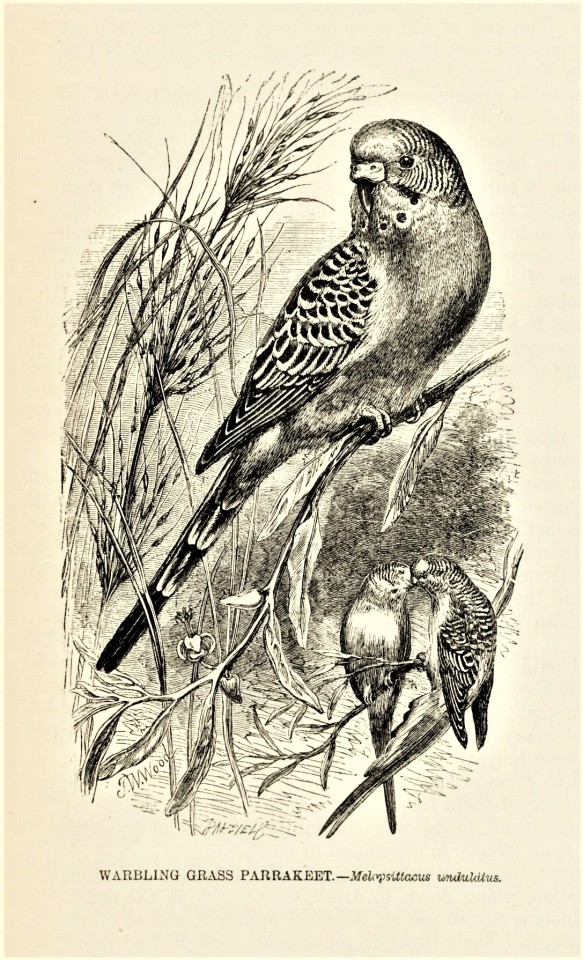
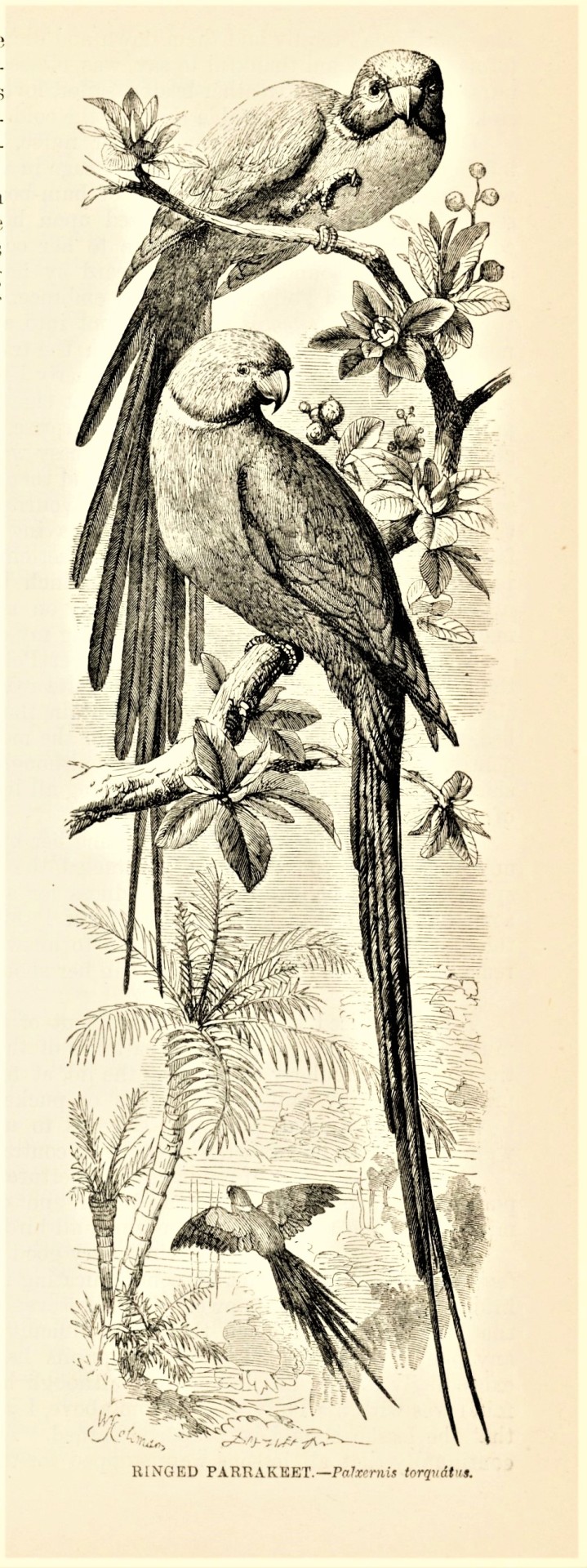

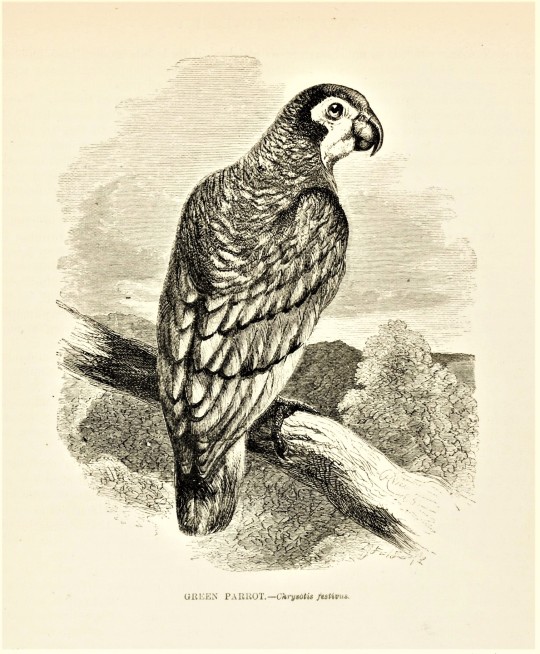


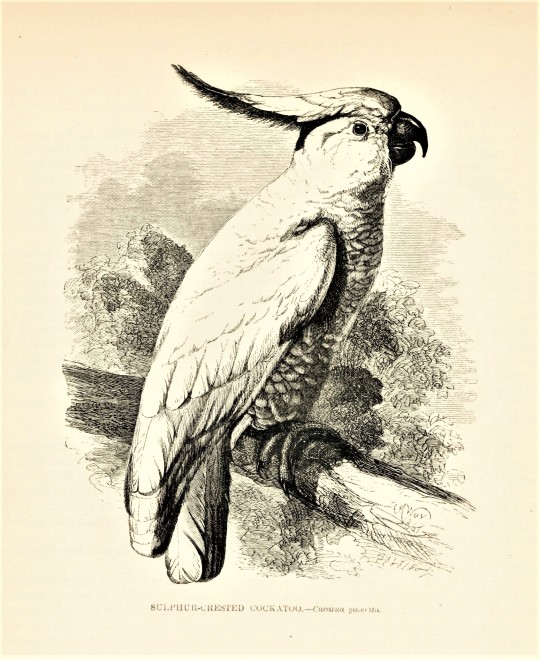


A Feathursday of Wood-Engraved Parrots
This week we showcase some Psittaciformes engraved in wood by the Brothers Dalziel from the Birds volume of The Illustrated Natural History by English natural history writer John George Wood (1827-1889), published in London by George Routledge & Sons in 1865.
J. G. Wood was not a professional zoologist, but rather an ordained priest who relinquished his pastoral duties to become one of the most well-known parson-naturalists of the Victorian era, especially for his numerous publications and his famous public lectures both in Great Britain and America.
The Brothers Dalziel was a prominent family wood-engraving business founded in 1839 by George Dalziel (1815-1902), and composed of four brothers and one sister. The engravings shown here were made from illustrations by several artists, including William Stephen Coleman, Harrison Weir, and T. W. Wood.
View another post with illustrations engraved by the Brothers Dalziel.
View more Feathursday posts.
View moreposts with wood engravings!
#Feathursday#Parrots#Psittaciformes#The Illustrated Natural History#John George Wood#Brothers Dalziel#George Routledge & Sons#parson-naturalists#William Stephen Coleman#Harrison Weir#T. W. Wood#natural history#wood engravings#birds#birbs!
64 notes
·
View notes
Text
Women's History Month Spotlight on Elizabeth Cady Stanton
Women’s History Month Spotlight on Elizabeth Cady Stanton: Courage as a Woman’s Greatest Protection November 12, 1815 · October 26, 1902 “The best protection any woman can have … is courage.” – Elizabeth Cady Stanton I’ll start this particular Women’s History Month spotlight by stating that Elizabeth Cady Stanton is the muse who inspired my personal pathway towards the feminist perspective.…
#Elizabeth Cady Stanton#March is Women&039;s History Month#women&039;s empowerment#Women&039;s History Month#womens quotes
0 notes